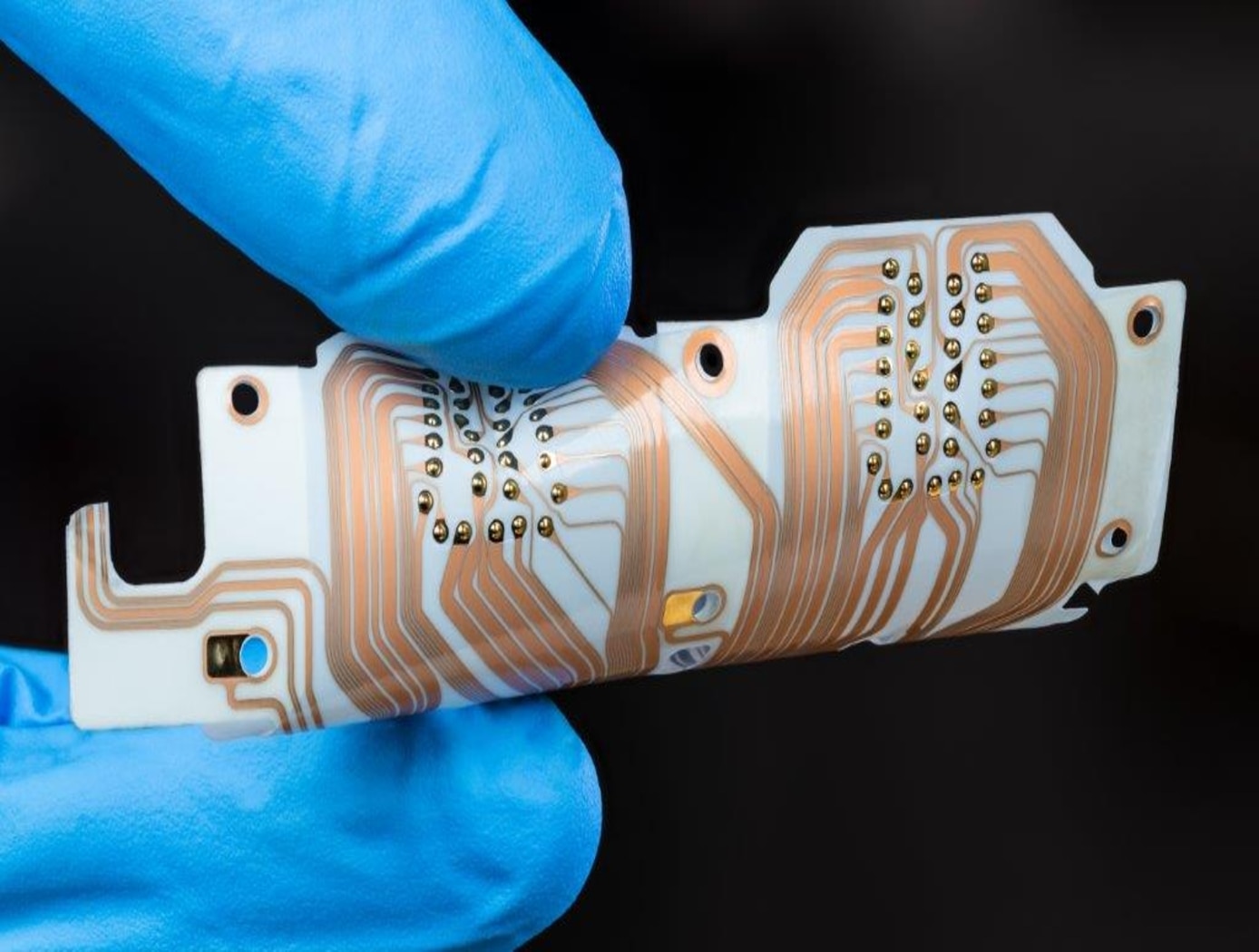Search
electrical and electronics

Printable IoT sensor development platform
Advances in additive manufacturing have enabled development of printable electronic sensor elements that can be deposited onto flexible substrates. To benchmark performance of printed sensors against the state of the art, NASA developed a low power flexible sensor platform. The platform integrates the following key components and features:
-Flexible substrate: DuPont Kapton allows bending around cylindrical surfaces as small as in diameter.
-Embedded microcontroller: Cypress CY8C4248 LQI-BL583 Arm Cortex M0 processor with BLE wireless controller, max frequency 48 MHz. Supports low power modes of operation, capacitive sensing support, and a single-channel 12-bit AD converter.
-Commercial sensor suite: Bosch BNO080 inertial sensor; Bosch BME280 humidity, pressure, and temperature sensor; AMS CCS811 air quality sensor (VOCs and CO2).
-Prototyping area for custom-printed sensors: 1) thermistor, uses carbon-based PTC resistor paste DuPont2792; 2) capacitive humidity sensor using a NASA-developed dielectric ink.
NASA researchers have used the platform to study performance of the printed capacitive humidity sensor. The 2x4 mm co-doped barium titanate sensing element is highly sensitive to water vapor and performs as an unobtrusive breathing monitor, sensitive to breath at distances of up to 20 cm. Average change of sensor capacitance at a distance of 7.5 cm was observed to be 6.23.5 pF.
Communications

Optical Transceiver Method of QKD Encryption Suite of Technologies
The core of the technology is the SAW division de-multiplexing method (LEW-19920-1). It uses a commercially available double-clad fiber optic cable with a 9um core and a 105um first cladding. By optimizing the wavelengths of the QKD photon and data transmission, a single focusing lens can create a diffraction pattern that directs the QKD photons to the 9um core and the data signal to the 105um secondary core.
Key components of the system include:
• SOA Driver With Wideband Current Control (LEW-19913-1): This device allows a semiconductor optical amplifier (SOA) or laser to be driven with an arbitrary current at a rate of over 100 MHz. This enables the rapid generation of sub-nanosecond laser pulses with one of four polarization states, which is necessary for QKD.
• Random Bit Generator with Linear Feedback Shift Register LFSR Scrambler (LEW-20058-1): This device produces random bits by combining the output of a noise source with a pseudorandom bitstream from the LFSR. This allows a random basis set to be generated on demand for a polarization modulator.
• Variable-length quantum key conversion (LEW-20224-1): Since QKD operations produce keys of varying lengths, a strategy was developed to "digest" these raw keys using a hash function, such as SHAKE256. This process generates a fixed-length output that is useful for symmetric encryption schemes like AES256.
• The system also incorporates a Discretization Algorithm for Numerical Wave Optics Simulations (LEW-20119-1), which can accurately model the effects of atmospheric turbulence on the propagating optical beam.



